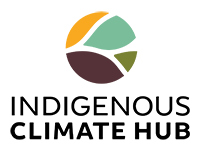Indigenous science (or Native science) is “a science of the way of knowing the land.” It involves multiple ways of knowing the natural environment and highlights Traditional Ecological Knowledge (TEK). As part of environmental education, Indigenous science can address climate change by informing government policy, strengthening human connections with nature, and building relationships between Indigenous and non-Indigenous communities.
Indigenous scholars are educating policy makers, scientists, and students about Indigenous science in various ways. For example, Dr. Myrle Ballard (Lake St. Martin First Nation), Director of Indigenous Science at Environment and Climate Change Canada (ECCC), raises awareness of Indigenous science through a process of “bridging, braiding, and weaving.” Dr. Ballard encourages better government decision making and collaborative research practices through linkages between Indigenous science and Western Science. In another example, at the University of New Mexico, Dr. Gregory Cajete (Santa Clara Pueblo) teaches about Native science, and encourages students to take responsibility for the environment, while also building a connection to it.
The Bunun People of Taiwan have designed an environmental education program involving TEK that engages their own community and non-Indigenous people. A key intention of the Bunun program is to encourage non-Indigenous people to adopt Indigenous environmental practices to combat climate change. The program strengthens Indigenous practices as a way to counter historical injustices caused by colonization.
Together, Indigenous science and environmental education can influence government policy and Western scientific practices, and foster diverse relationships, to address climate change.
By Leela Viswanathan
(Image Credit: Providence Doucet, Unsplash)

